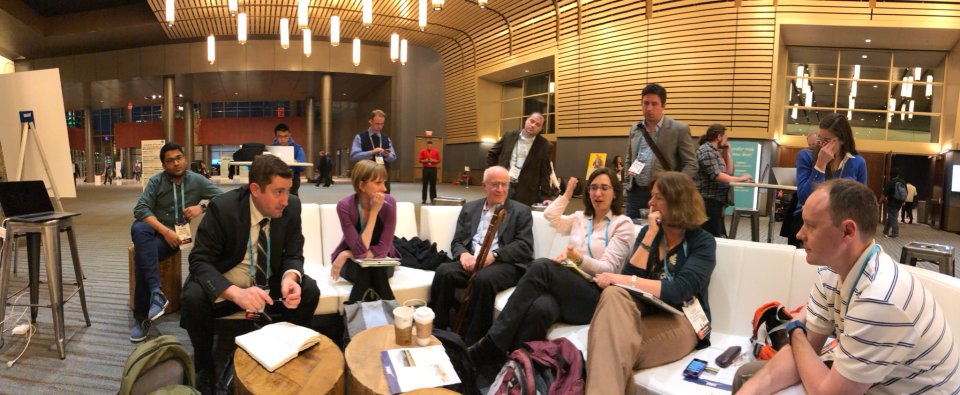Nearly 10 years ago, I visited Taiwan for the first time as a participant in the Terrain-influenced Rainfall Experiment (TiMREX). Since then, I’ve continued to build off that project and the associated productive collaborations, which have brought be back to Taiwan on many occasions as an invited participant and presenter at conferences.

Enjoying a view of Taipei 101
During the week of 16 October 2017, I was invited and generously supported by my National Taiwan University (NTU) colleagues to participate in the 12th International Conference on Mesoscale Convective Systems and High-Impact Weather in Asia (ICMCS-XII). I built off my Ph.D. research on analysis of convection in the mountainous regions of northwest Mexico and southwest Taiwan through a radar-based comparison of mesoscale convective systems in these regions with those observed over the tropical Indian Ocean during the Dynamics of the MJO (DYNAMO) experiment. The conference also offered an exciting opportunity to learn more about high-impact weather research in Taiwan, China, Japan, and South Korea.
I was also invited to give a seminar at NTU. I chose to present my recent research from the Olympic Mountains Experiment (OLYMPEX). My presentation generated an interesting discussion on the role mountains play in the distribution and intensity of precipitation in mid-latitude frontal systems compared to what is observed in mountainous subtropical Taiwan. Whenever I present to this audience, I am always reminded to reframe how I talk about “extreme” rainfall, as our annual rainfall in the Olympic Mountains has been measured in only a few days during typhoons impacting Taiwan.
In addition to the seminar and conference, we had several meetings at the Taiwan Typhoon and Flood Research Institute (TTFRI) who will be important collaborators in our future effort to study extreme rainfall in this region. I appreciated the productive discussions and the opportunity to share our common interests in better understanding high-impact weather both in the ideal mountainous laboratory that is Taiwan and applying that understanding to other regions around the world.

Meeting participants at TTFRI
As always, I appreciate the unmatched hospitality of our Taiwan hosts and the immense work that went into organizing such an interesting, exciting conference. I also greatly appreciated the invitation to visit a radar site near the northern coast, where an operational S-band radar and research C-band radar sits atop a mountain. I learned that the S-band radar has been destroyed TWICE by typhoons and continues to serve as an important tool for forecast operations in Taipei.
I also enjoyed catching up with old friends and celebrating their successes nearly a decade after we met during TiMREX.

Until next time, Taiwan…


















